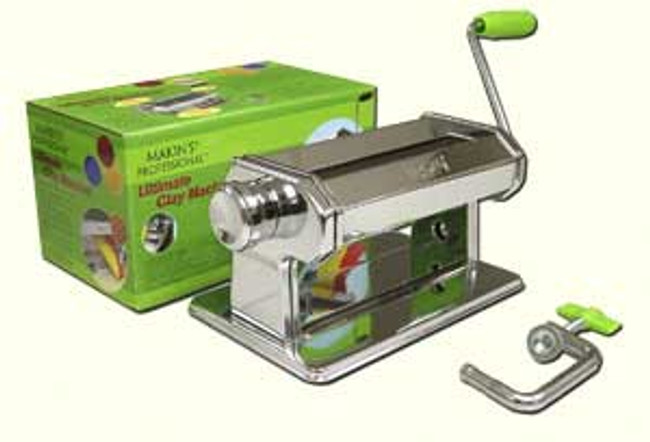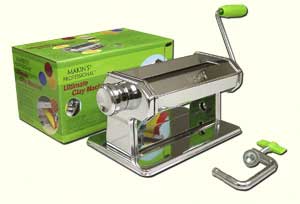
Makin's® Ultimate Clay Machine™ |
|
|
|
Makin's® Ultimate Clay Machine™ is WONDERFUL. The non-stick rollers don't leave ugly black marks on your clay. The working area is 7" instead of the usual 6". There are 9 thickness settings.
A Pasta Machine is highly recommended! (PM1) in our instructions means Setting #1 on the Pasta Machine. Some Pasta Machines have the thicknesses going from thinnest to thickest, the opposite of ours. Most only go to #7. Check your pasta machine and compare thicknesses and settings. CAUTION: Keep hands and fingers away from clay machine rollers when operating. |
Save
-
I love my new Clay Machine!
This is an awesome clay machine! I love the quiet action and the non-stick rollers. Having the right tools helps my projects go much more smoothly, and at half the price of the Atlas Pasta Machine it can't be beat. Thanks Poly Clay Play!!! :)
-
makins clay machine and motor
If you work with any sort of polymer clay-----you have to have these two pieces. It makes the clay conditioned and ready to work with within a few minutes. Awesome!!!!!My hands and fingers never have felt so good!!!!!!!!!!!










